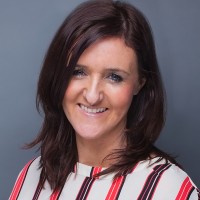
More recently the debate has focused on the distribution of these products and the best way for intermediaries to access second charge mortgages. These are positive conversations as it clearly demonstrates that the intermediary market is not considering ‘if’ they will offer seconds but the discussions appear now to be focused on ‘how’ intermediary firms go about it.
The market currently sits at around £900m annually. Broadly the growth of the market has been driven by value rather than the number of transactions. The Finance & Leasing Association recently reported a dip in lending for April 2016 to £51m following a strong performance in March.
This is not unexpected given March completions will have included a significant element of Consumer Credit Act regulated loans which were subject to a strict deadline for completion given the lack of transitional arrangements within the Mortgage Credit Directive. Combine this with a large scale change in sales processes and regulatory requirements and it is clearly evident that the figures reported for April are directly impacted by a market in transition.
The reality is now that seconds are subject to much tougher regulation, but this actually presents a fantastic opportunity for advisers to play a significant part in the growth of a market which has aspirations to account for at least 10% of the UK remortgage market.
With around 70% of all mortgage transactions being completed on an intermediated basis, I firmly see the growth of the second charge sector within the intermediary market, this time not only in terms of value but more significantly by volume.
Second charge products can offer additional layers of lending opportunities for those borrowers whose needs are slightly more complex or simply cannot be accommodated by mainstream mortgage lending. Take business loans for example. The options within the mortgage market are broadly limited for this loan purpose and often expensive, yet for most second charge lenders, business purpose loans are accepted across some standard product ranges. This means the lowest rates of interest can be accessed for this purpose and the funds can be released directly to the borrower.
We have seen increased demand from professionals, such as dentists, solicitors and medical professionals looking to buy into practices and second charge business loans can be a cost effective way of achieving this. Layer in the potential to remortgage in the future, without being penalised by loaded rates of interest attached to business purpose lending, and it is easy to see why seconds are appealing to borrowers who may not at first glance appear to meet the profile of a typical second charge borrower.
More education within mortgage intermediary firms is required about the detail of how second charges can drive even better customer outcomes but the huge benefit of increased regulation of this sector means we have never had a better opportunity to achieve this.














